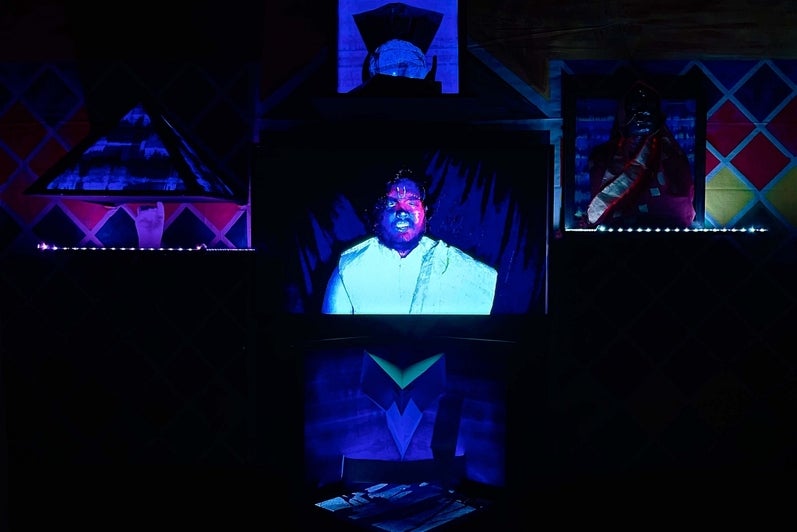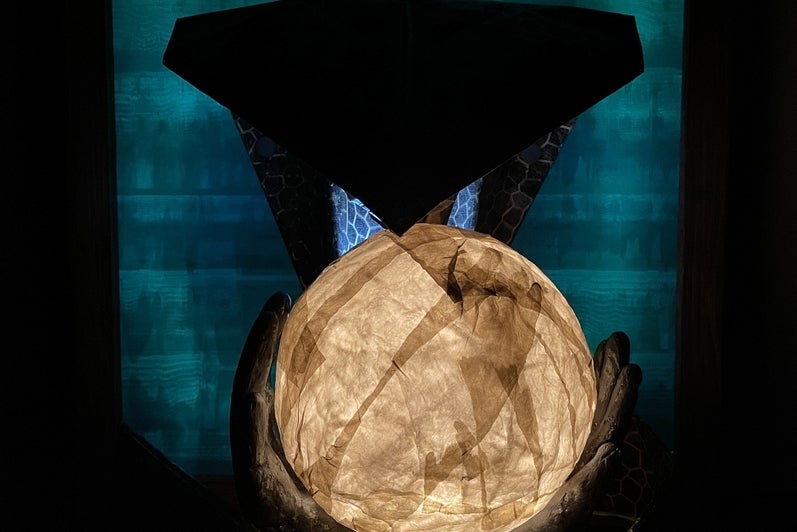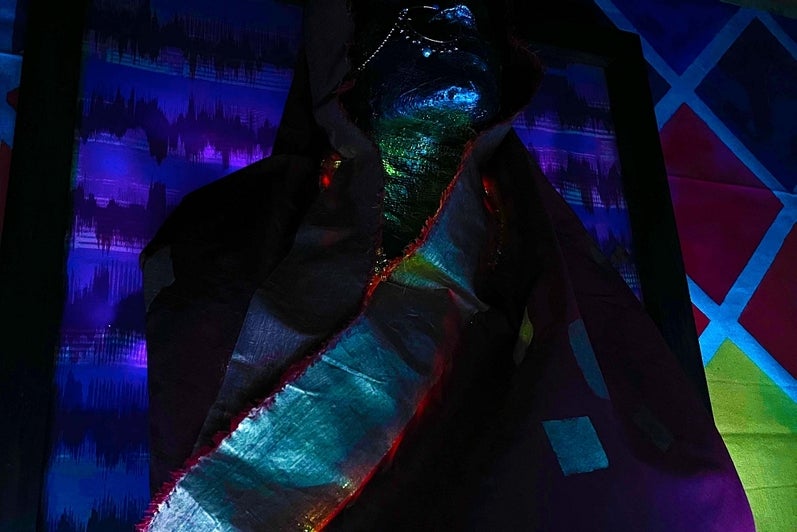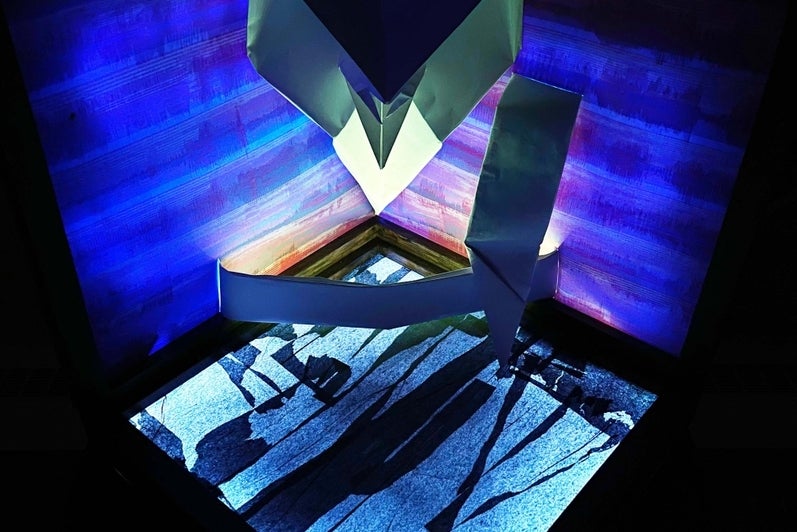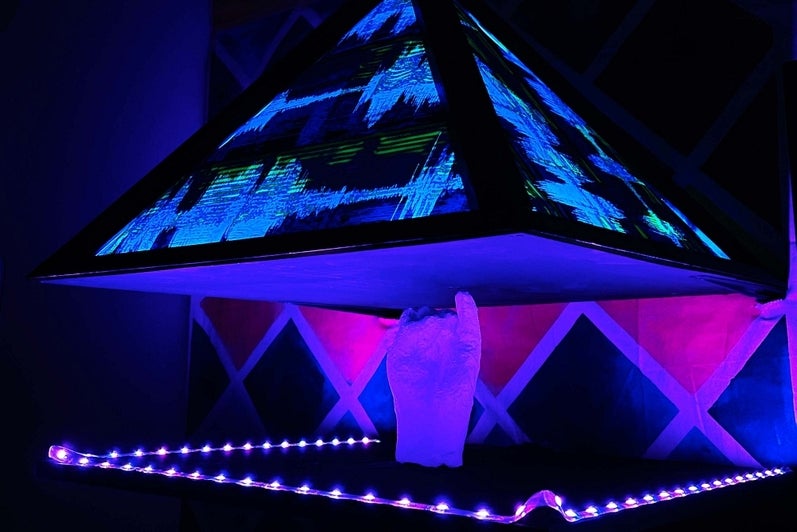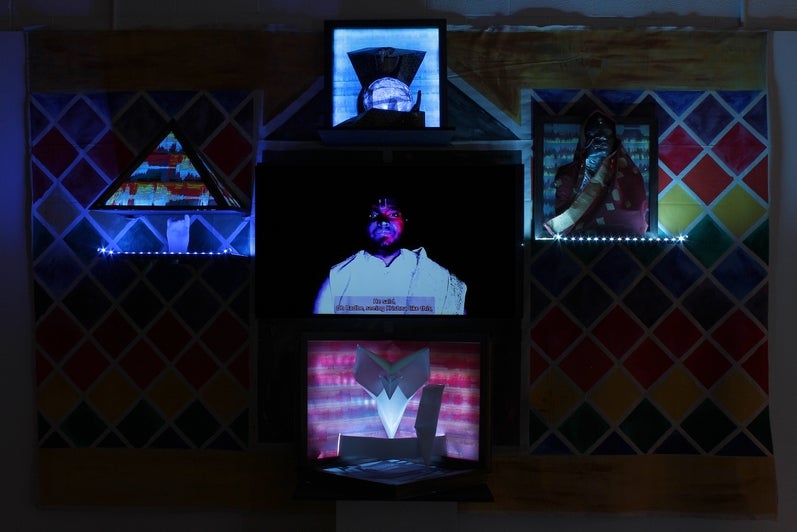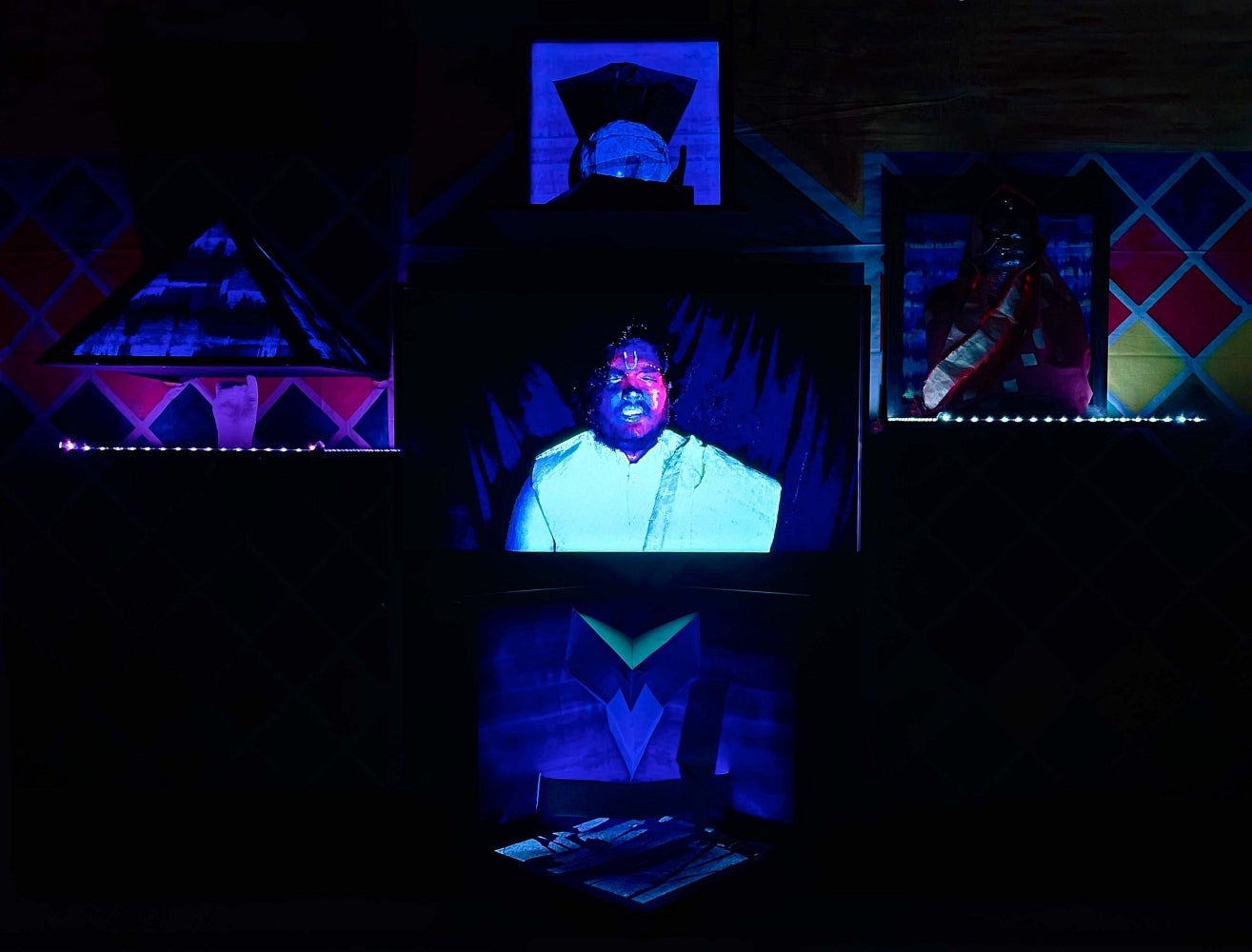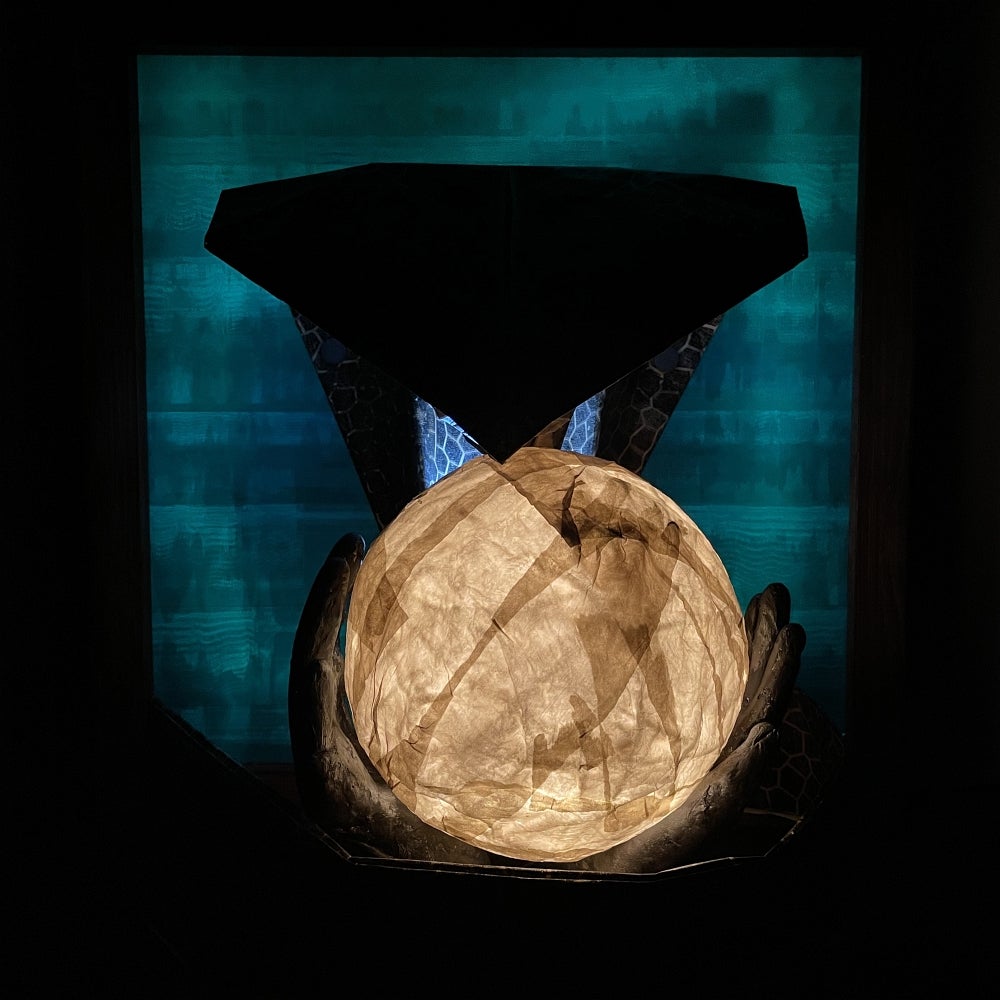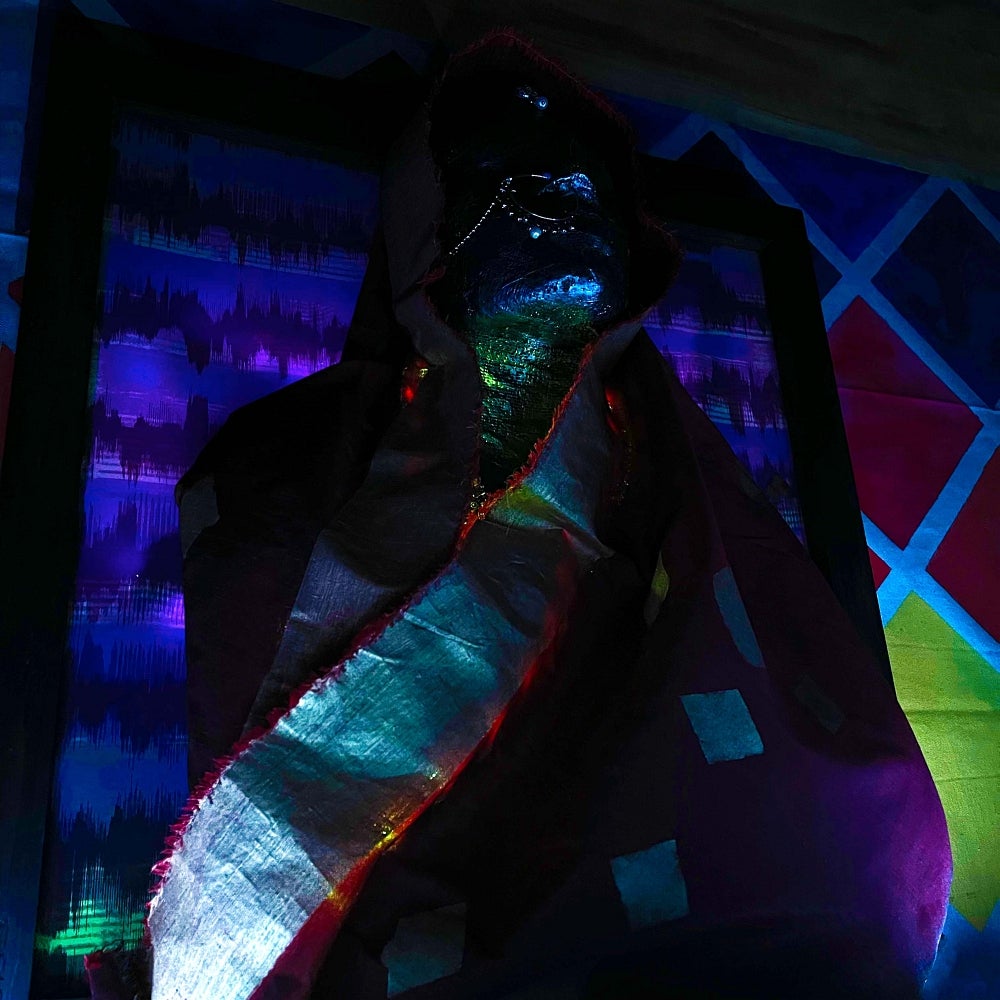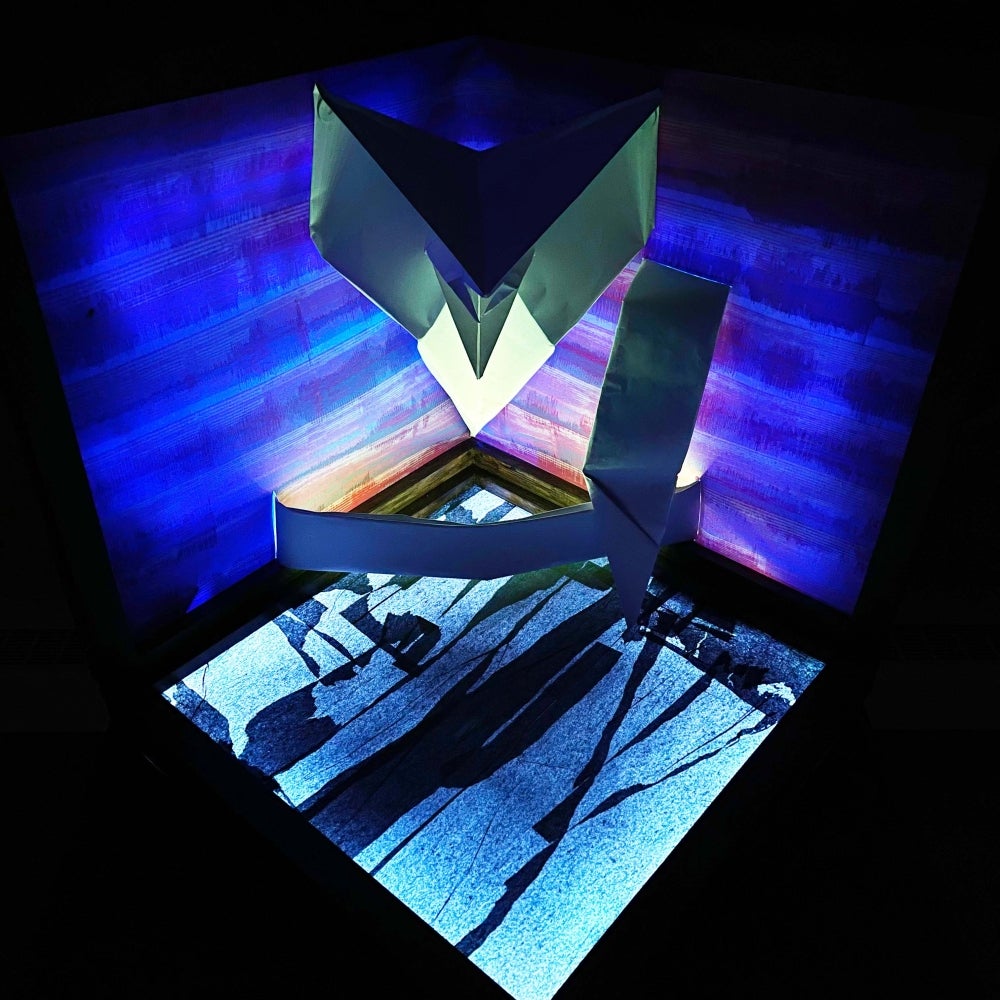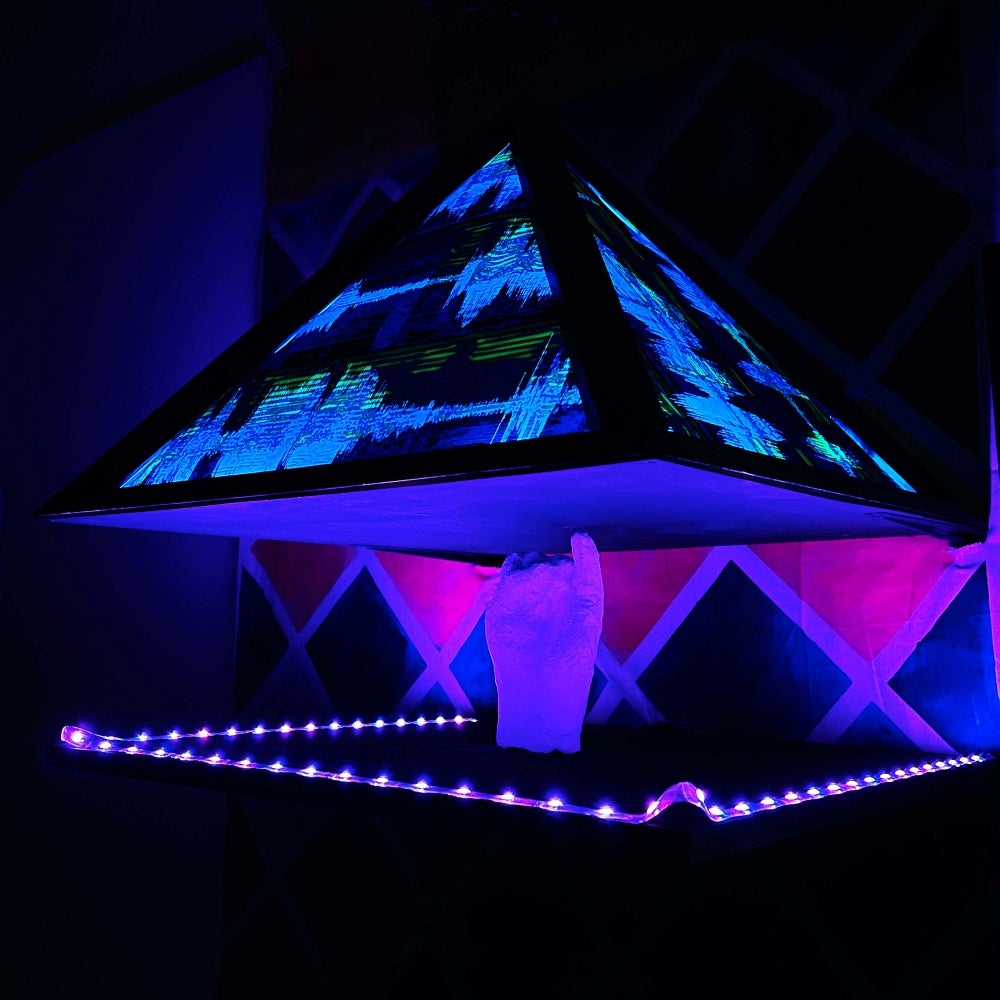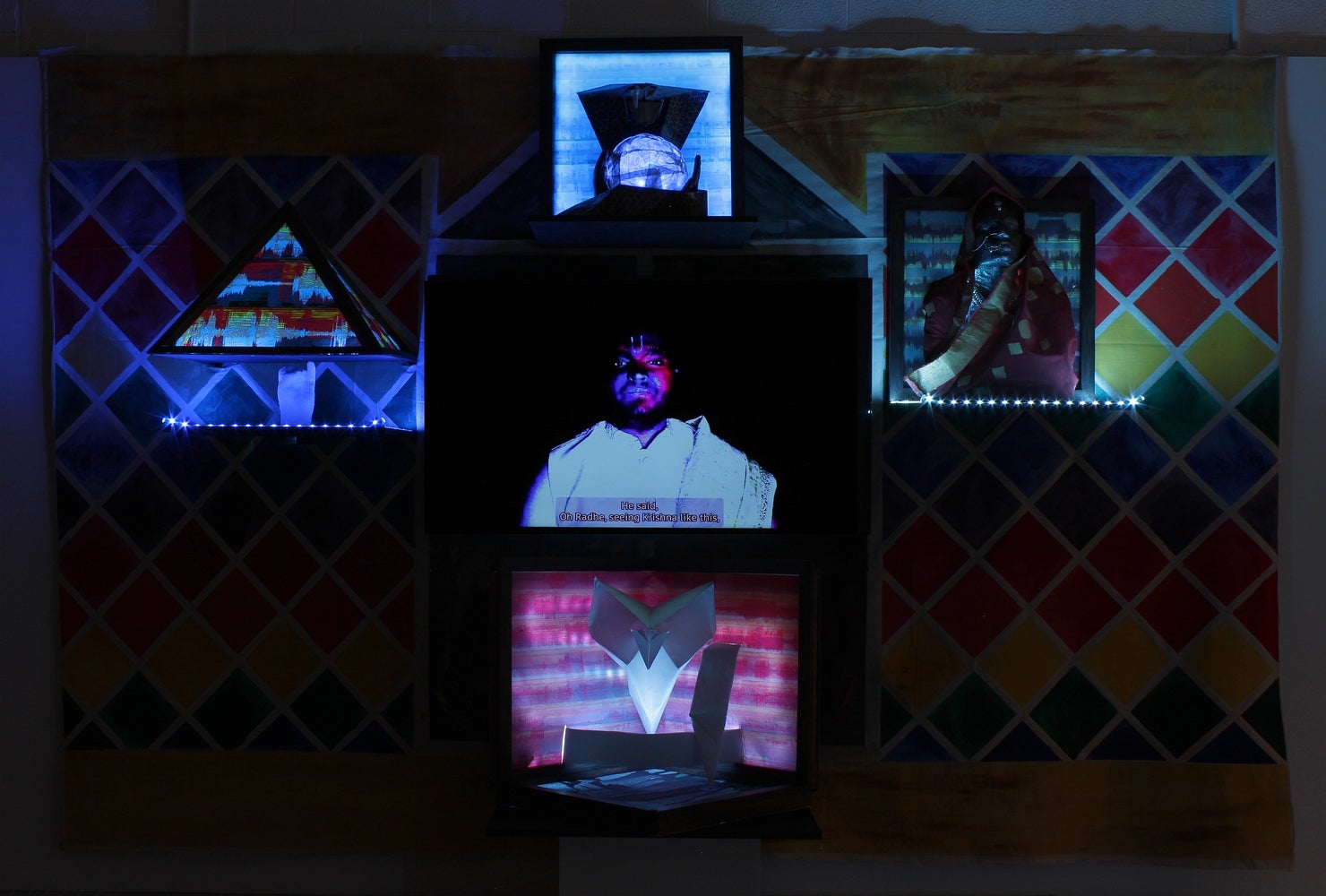
Website: www.thetinteddiary.com
Instagram: @thetinteddiary
Facebook:The Tinted Diary
Email: s43chand@uwaterloo.ca or santoshsekar7@gmail.com
Santosh Chandrasekar is a visual artist based in Waterloo, Ontario, pursuing Fine Arts: Studio practice and Visual Culture at the University of Waterloo. He employs a range of media from performance art to painting and sculpture, bringing them together using light as a universal medium. Born in India and brought up in Oman, his approach is grounded in his multicultural identity and his immigrant experience. He has exhibited work in the Youth and Emerging Art Exhibition (Hamilton Arts Council), as well as the Artery Gallery. He also participated in FINE 307: Performing Life, an online event, and is the recipient of the Pat Hurley Memorial Award. He was part of the Ignition 10 exhibition in Hamilton Inc. Art Gallery and is currently working towards his fourth-year thesis.
Artist Statement
Vasudeva Aikshata! (Vasudeva Saw!) is a phrase from the text Srimad Bhagavatam, written by Veda Vyas sometime between the eighth and the tenth century CE. The phrase, exclaimed at Krishna’s birth, captures the reaction of Vasudeva (Krishna’s father) as Lord Krishna, the all-encompassing divinity of Hinduism, was born. As an immigrant I listened to stories like this one at various stages of my life, told by my grandparents, parents, and gurus. They are key to understanding my Indian ancestry and heritage and in many ways, they form my foundation as an artist.
A strong oral tradition, diverse visualities rooted in Indian and Western art histories, as well as awe-inspiring music, coalesce as the basis of my artwork. The presence of the Human Canvas, my alter ego, allows me to view these stories from an objective point of view and contend with broader visual cultural discourses on caste, gender, colonialism, and the immigrants’ perspective.
The tale that unfolds in my works centers on Krishna’s childhood and his relationship with Radha (Krishna’s chief consort and companion). Four light-based sculptural installations function as a visual anthology. The installations are animated through a live musical performance by the Human Canvas, who serves as the stories’ narrator.
Light provides a sense of universality to this multi-dimensional work, allowing it to stay grounded in philosophically-driven narratives as opposed to religious iconography. The interplay between 2D and 3D objects, music, performance and the aforementioned juxtaposition plays to the theatrics of mise-en-scene. This version of the piece is contextualized for an online platform and emulates the style of a video podcast that is simple and straightforward. This style allows me to connect with my audience more personally and create a sense of hope in trying times.
Orientalist paintings are my key inspirations. Historically, their use of the gaze and mystification along with a trivializing “spectator” perspective alienated cultures of the east. My intention is to use that visuality to juxtapose and critique their depictions and showcase the richness of these cultures. Positioning the Human Canvas in a Canadian setting allows me/him to present the trauma of colonialism and eurocentrism from an Indian/middle-eastern point of view, creating a conversation about agency and reconciliation.
The Human Canvas is a visual expression of my psyche—a character I created as a result of my identity conflicts stemming from being brought up in a multicultural environment. He allows me to negotiate with and navigate between who I am and what I “ought” to be. He is an embodiment of the different traits and tastes I acquired from my experiences and my ascribed identities.
Installation 1
"Krishna Jananam" is a fascinating tale capturing the birth of Krishna, the all-encompassing divinity of Hinduism. I remember the first time my grandfather told me this story. I was looking at him in awe, imagining the scene of Vasudeva carrying Little Krishna across River Yamuna during a raging storm and the snake Adishesha helping him. This light-based installation captures that awe uses a contemporary Western visuality. This story marks the beginning of "Krishna Leela" (tales about Krishna) and my fascination with them.
Installation 2
This installation is about the story of Puthana, a demon sent to Vrindavan by the evil King Kamsa to kill little Krishna. The demon disguises as a motherly figure and feeds Krishna poison through her breast milk. However, Little Krishna accepted the poison as a motherly offering and gave the demon salvation. The story exemplifies forgiveness and compassion and is presented using a similar Western visuality but with an Indian twist. The title is inspired by the song "Karuna Murthi" written by Sri Muralidhara Swamiji.
Installation 3
Akila Kaladi Guro Nanartha means “the master of all art forms dances.” This phrase from Srimad Bhavagatam describes Krishna as he playfully dances on the head of the evil snake Kalinga who poisons the River Yamuna. This light-based installation is distilled and minimal to allow the light to create a sense of dynamism. The light also represents a sense of divinity— a common thread across this body of work.
Installation 4
The "Govardhan Leela" is a fascinating tale about nature worship in Hinduism. I remember watching this tale unfold on my favourite show Krishna in Brindavan. I still remember the grand image of Krishna lifting Mount Govardhan and asking the villagers to seek shelter under it because of the massive floods in the village caused by Lord Indra’s ego and wrath. This installation is greatly influenced by the physical tensions of minimalist sculptures and my awe as a child when I first heard the story unfold.
Interview Questions
What aspects of your life inspire your art?
I can’t help but answer this question philosophically. I am drawn to life as a whole because of how dynamic and diverse it is. My identity and the politics that surround it yield itself to this dynamism. I learn from every experience life offers, and that learning is explored artistically. I think the starting point of this exploration began with stories from my grandfather as a child. His enthusiasm in teaching me how to explore diversity around me changed how I viewed my art practice.
What are your preferred mediums and why are you drawn to them?
I began my art practice as a painter. I was drawn to the medium because of its dynamism. To think about how a painting from the Renaissance and a painting by Jackson Pollack were from the same medium baffled me. However, my art practice changed when I was introduced to performance art by Professor Bojana Videkanic. The medium is so flexible that it yields itself very well to understand my identity and multiculturalism. Although my work has painterly aspects, the medium of performance gives me a sense of agency.
Where do you see yourself in the future? How do you see your art practice evolving?
The stories I’ve heard growing up and the investigation of their philosophy as an adult is a process I enjoy. I wish to continue making art based on them going forward. These stories are endless and range from religion to politics to science. Besides these explorations, I’ve developed a passion for teaching, knowledge-sharing, and storytelling. I hope to pursue teaching at a post-secondary level while developing an independent art practice.
What do you want people to know about you as an artist?
More than an artist, I wish to be known as a storyteller. I say this because, as artists, I believe all of us tell stories, some more specific than others. I think stories are universal and common across countries, from bedtime stories for children, to stories about God told during religious gatherings. When I created the Human Canvas, my alter-ego, I saw him as a storyteller, sharing stories influenced by my life experiences.
What is the most significant thing you will take away from your Fine Arts studies?
Exploration and keeping an open mind! When I began my undergraduate degree, I was very drawn to specific styles and media, but the diverse coursework I did, allowed me to explore and diversify. It is essential to keep exploring and learning about new visuals and media as an artist. It greatly influences how we handle the complexities of diverse subject matter.
